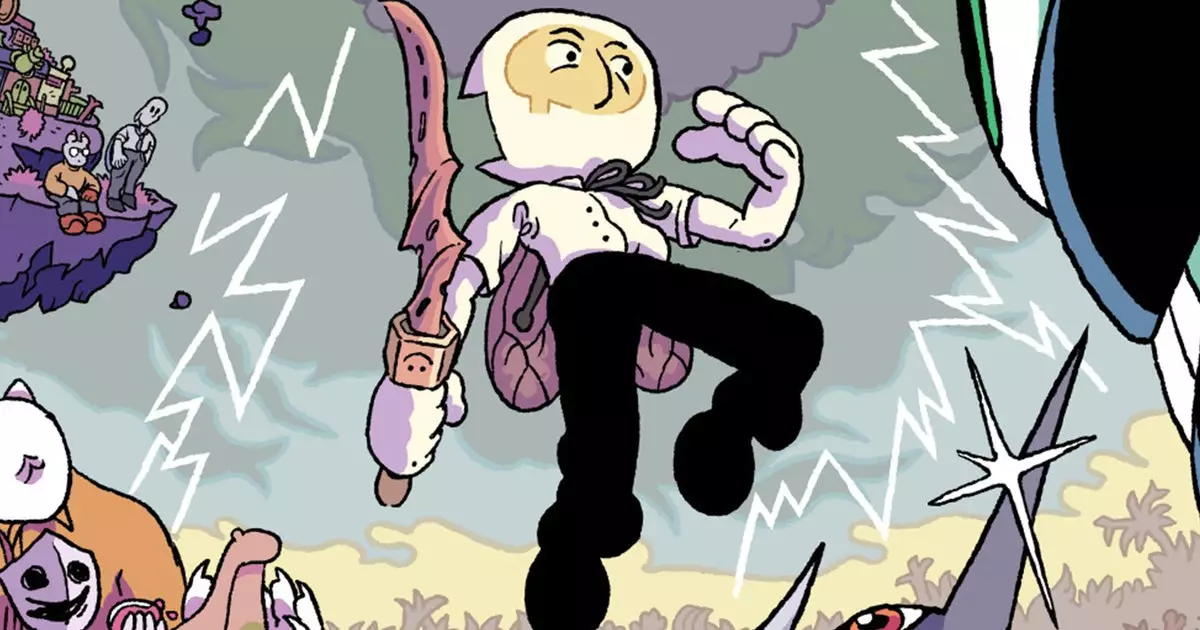Blanksword asserts itself as a remarkable experiment in the world of indie gaming—a title daring to combine two genres that are often seen as incompatible: roguelike mechanics and traditional role-playing game storytelling. Typically, these genres tend to polarize audiences, with roguelikes emphasizing complexity and replayability, while RPGs focus on narrative depth and character development. Yet, Blanksword manages to blend these elements into a cohesive experience that feels fresh and genuine. As I explored its demo, I was struck not only by its unique gameplay structure but also by its unwavering artistic voice, reminiscent of the outsider art aura of titles like Hylics or Felvidek, with a dash of the cult classic OFF.
The game’s visual aesthetic immediately signals a departure from conventional fantasy RPGs. Its art style, crafted by Mortis Ghost, invites players into a surreal, almost dreamlike universe where vibrant, unsettling, and evocative imagery shape the narrative landscape. The central character, Blank, an angel with a fractured mind, embodies this unsettling beauty. The premise—that of an entity surviving a brutal head trauma, stripped of memories—gives the game an emotional resonance that elevates it beyond mere gameplay mechanics. This tragic yet intriguing setup invites players to explore identity and redemption amidst a visually compelling world.
Innovative Gameplay that Challenges and Charms
Blanksword’s mechanics are where it boldly defies expectations. Its turn-based combat system feels familiar, yet when combined with the roguelike procedural generation, each encounter becomes unpredictable and layered. What is particularly fascinating is how the game’s design incorporates the concept of “brain parts”—a mechanic that cleverly ties into its narrative core. As Blank collects these angelic fragments, he reclaims abilities that directly influence gameplay: from intimidating foes and detecting lies to understanding complex topics or haggling prices. This modular approach provides a sense of progression and personalization, allowing players to tailor their character in meaningful ways within each run.
The game boasts a library of hundreds of potential moves and items, generating an almost infinite variety of playthroughs. This depth ensures that no two runs are identical and that discovery remains central—an essential trait in roguelikes. Yet, within this high degree of randomness, there is a narrative throughline that keeps players invested in their exploration of Blank’s fractured mind and mysterious past. The balance of randomness and story-driven character development promises a compelling experience where each victory or failure feels significant.
A Cult Classic in the Making? Risks and Rewards
What truly elevates Blanksword is its commitment to a distinctive artistic and thematic vision. It leans heavily into its indie roots, embodying a certain “outsider” charm, but it does so with confidence. The involvement of Quinn K., the original translator of OFF, and Mortis Ghost’s artwork further cements its status as a love letter to unconventional, experimental game design. Their influence suggests a game not afraid to challenge norms—both visually and mechanically.
However, the risks remain. Indie projects that rely heavily on artistic vision and niche appeal often face challenges in gaining wide traction, especially without a concrete release date. The Kickstarter campaign and demo represent critical steps toward funding and community validation. While the estimated release window in 2027 hints at the game’s complexity and ambition, it also raises questions about development stability and scope creep. Success hinges on whether the game can deliver on its innovative promise amidst limited resources.
In the end, Blanksword’s true potential lies in its daring—an artistic and gameplay fusion that refuses to conform. It stands as proof that genres can collide and still produce something meaningful, if built upon a foundation of genuine creativity and honest storytelling. For fans of truly unique indie titles, it’s worth watching closely—if only to see whether this bold experiment can carve out its rightful space in an often predictable industry.

